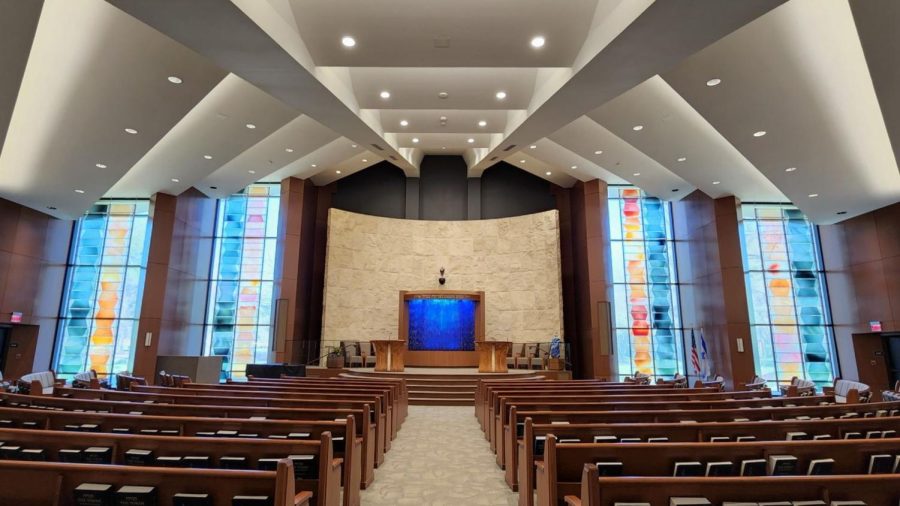The remarkable true story of Shaare Emeth’s Chihuly stained glass windows
Inside the Stiffman Sanctuary, where the Chihuly stain-glass windows have been on display since 1980.
Published May 4, 2023
There is nothing quite like the feeling of opening your email and finding you’re being scolded by a rabbi. In this case, I had just published a story titled “Two ways to see Dale Chihuly artwork and how living on a kibbutz changed his life,” in The Morning Light when I see an email from Congregation Shaare Emeth Rabbi Emeritus Jeffrey Stiffman with the subject line: “You left out one way.”
The point of his email was to alert me that there were more works of art by Dale Chihuly on display in St. Louis that are not part of the current exhibit at the Missouri Botanical Garden or the upcoming exhibit at the Greenberg Gallery in Clayton.
For context, I grew up with Stiffman’s daughter Cheryl Maayan, and have known and respected the rabbi nearly all my life. Since joining the Jewish Light, we have reconnected and email each other often with varying attempts at humorous salutations.
I grew up attending Congregation Temple Israel, and although I have seen the glass windows at Shaare Emeth many times, I did not know they were of such artistic significance and the story behind them.
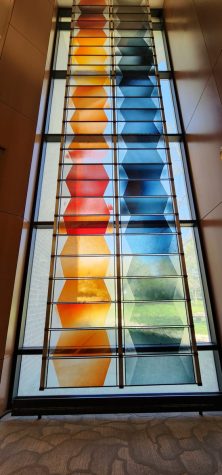
Chihuly glass at Shaare Emeth
After making the controversial decision to move from University City to Creve Couer, Shaare Emmeth, a building committee was established to oversee the construction of the new synagogue. In 1971, Rabbi Stiffman was named chief rabbi and suggested some members of the committee focus on the interior of the building. One was Dean Roger DesRosiers, Dean of the School of Fine Arts at Washington University. The other was Maxine Bromberg, an interior decorator.
ADVERTISEMENT
The ark from the University City building was to be the centerpiece of the newly designed sanctuary. Stiffman expressed to the committee that he wished for windows that would partially open to the outside. This was based upon the Talmudic statement that a synagogue should have windows that allow us to see outside so that we don’t forget that there are problems in the world.
“Dean (Roger) DesRosiers said that he would like to recommend someone who could do this,” remembers Stiffman. “He said that young Dale Chihuly was teaching at the Rhode Island School of Design and had just established a glassblowing center called Pilchuk in the state of Washington.
“Roger said that one day Chihuly would be known as the best glass artist in the world. He showed some examples of Chihuly’s work, which then centered on ‘American Indian basket designs’ in glass and some other creations.”
Reactions to the idea were mixed. Some members of the committee thought DesRosiers was trying to get a job for a friend, while others, more attuned to the art world, felt that Chihuly was very talented and should be engaged.
“He was invited to submit ideas and expressed the fact that six large, tall windows would pose a real challenge. He proposed glass screens made of panels of etched glass stretching from floor to ceiling,” said Stiffman.
Chihuly’s first two concepts were rejected by the committee. The third concept placed two panels in each window. Each panel represents the pillar of cloud and the pillar of fire which the children of Israel followed in the wilderness, according to the Biblical story.
“The majority of the committee liked this concept, and Chihuly was paid $50,000 for the six very large and tall windows. Today, small glass sculptures of his sell for as much,” said Stiffman.
Chihuly at work
Chihuly took different colored glass panels, covered them in wax, etched designs in them, then put them in acid baths, which etched the designs he had created into the glass. Each panel is unique. He said that a lot of the panels did not survive the process.
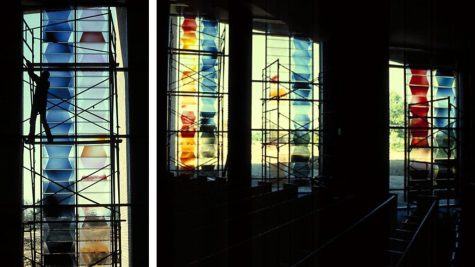
“He then spent much time at Shaare Emeth as the panels were each installed. He was most cordial, often lunched with the staff, and was happy that we were pleased with the windows,” said Stiffman.
When the synagogue was dedicated, the windows were somewhat controversial. Some liked them and some hated them.
“Then Chihuly became famous, perhaps fulfilling DesRosier’s prediction that he would be considered one of the finest glass artists in the world,” said Stiffman. “Now our windows are often part of art tours. Many come to the campus just to view his windows. And our members now brag, ‘We have the Chihuly windows!’”
The significance of the work
The art inside Shaare Emeth is important because it was the first time Chihuly had accepted a commission for art to be displayed in public.
“The windows are particularly interesting because they are unlike Chihuly’s more well-known style of wild, anemone-like constructions. They are very minimalistic and contemporary,” said Hannah Michelson, director of communications at Shaare Emeth.
According to Chihuly’s website, “Although they are abstract rather than figurative, Chihuly’s stained-glass windows for the Shaare Emeth Synagogue in St. Louis, Missouri, were almost certainly inspired by Matisse’s famous Chapel of the Rosary (1951) in Vence, France.”
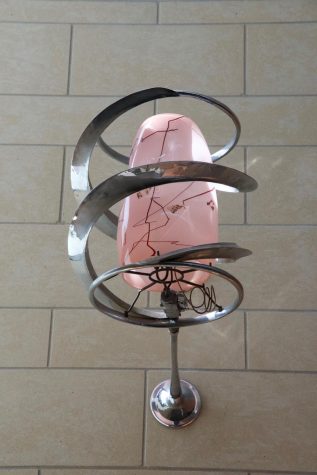
Chihuly at the St. Louis Art Museum
Mostly because I don’t want Rabbi Stiffman or anyone else to scold me in another email, I want to also mention that there are two more works by Chihuly on display in St. Louis. Both are at the St. Louis Art Museum.
Wine Chandelier
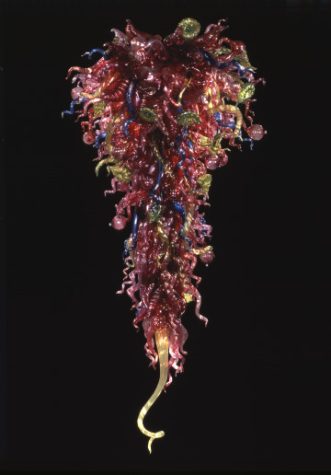
This piece titled “Wine Chandelier” was created by Chihuly in 1996. It is 100 x 52 inches in size and weighs 1,500 pounds. It was gifted to the museum by Francine and Marc Cohn and is currently on display in the lobby of the museum’s auditorium.
White Basket
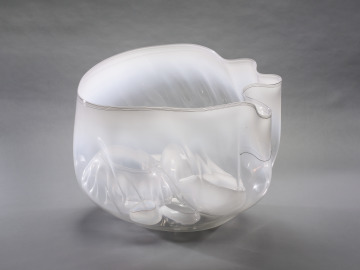
This piece entitled “White Basket” was created by the artist in 1995. According to Chihuly.com, the artist has often called the “Baskets” series, the most innovative work he’s done. Experimenting with the use of fire, gravity and centrifugal force, Chihuly found new ways to create asymmetrical vessels with thin, undulating walls. He often groups them in sets, with several small pieces nested within larger, wide-mouthed forms.
“White Basket” is on display in Gallery 130West.



